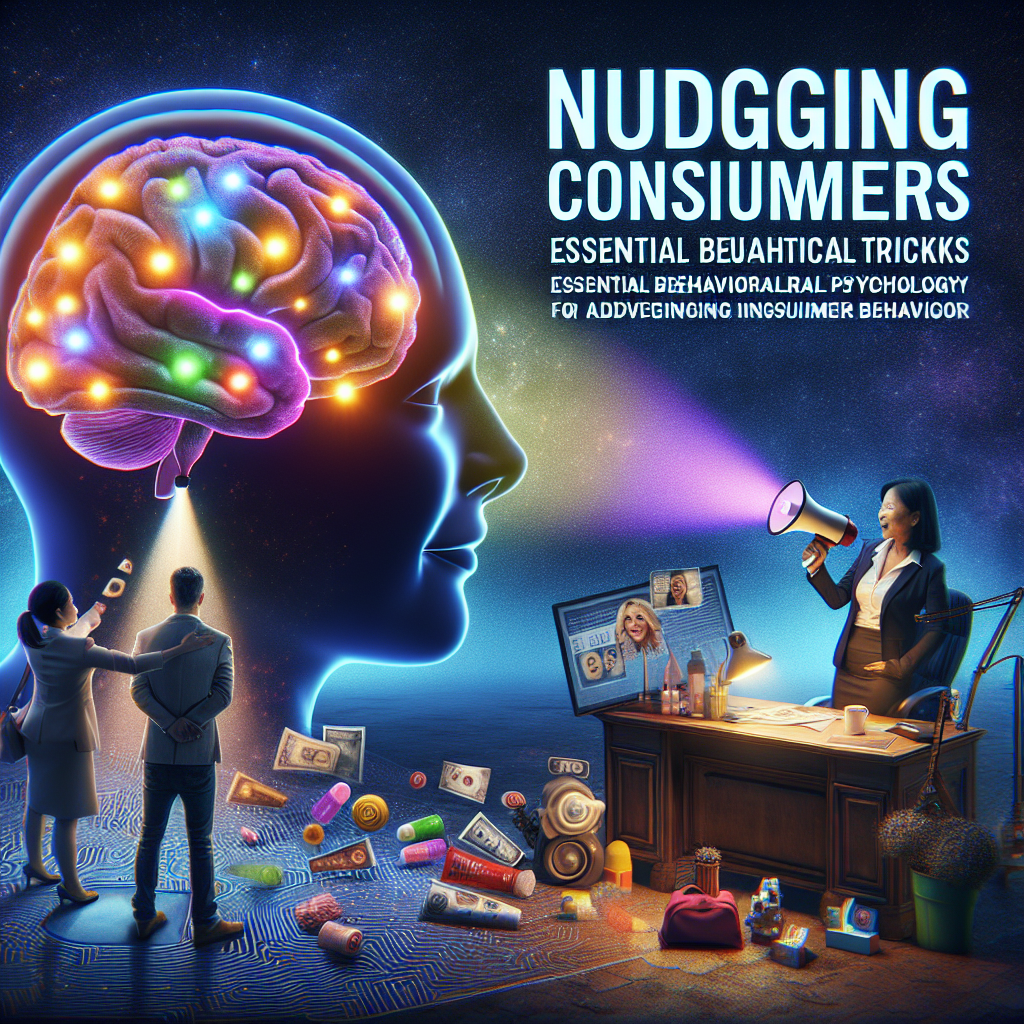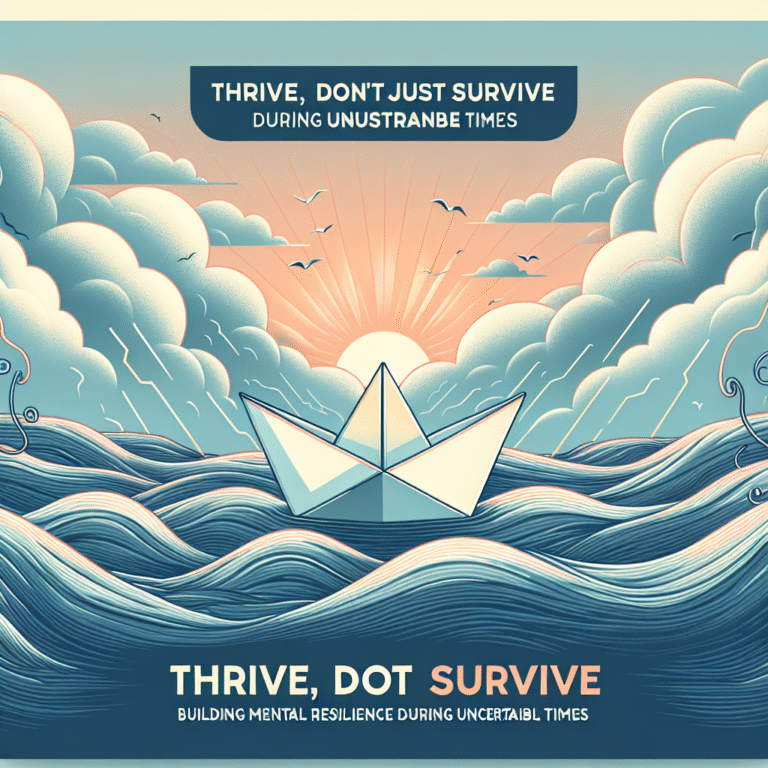
Nudging Consumers: Essential Behavioral Psychology Tricks for Advertisers
Introduction
In an era where consumers are bombarded with countless choices daily, distinguishing your brand has never been more vital. Enter the world of behavioral psychology—a treasure trove of insights that can shape and nudge consumer behavior in favor of your products or services. This article, "Nudging Consumers: Essential Behavioral Psychology Tricks for Advertisers," delves into the art and science of using subtle cues to influence purchasing decisions.
Understanding the intricacies of consumer behavior is no longer a luxury; it’s a necessity for advertisers striving to enhance their strategies and maximize engagement. By employing well-researched psychological principles, marketers can create environments that promote positive decision-making, all while maintaining customer trust and satisfaction.
Join us as we explore actionable insights, real-world case studies, and compelling arguments in this exploration of nudging consumers with essential behavioral psychology tricks that every advertiser should know.
Understanding Nudging
What is Nudging?
At its core, nudging refers to the practice of influencing choices in a predictable way, without restricting options or significantly altering economic incentives. Richard Thaler and Cass Sunstein popularized this concept in their book "Nudge: Improving Decisions About Health, Wealth, and Happiness." Nudges can take many forms—whether by altering the choice architecture (the way choices are presented) or by creating default options that sway consumers towards desired behaviors.
The Psychological Foundations of Nudging
To understand how to effectively nudge consumers, it’s essential to grasp the psychological principles behind decision-making. Key frameworks include:
-
Cognitive Biases: These are systematic patterns that lead to irrational judgments. For example, the "anchor effect" demonstrates how people are influenced by irrelevant information (like the initial price they see).
-
Framing: The way information is presented significantly impacts decision-making. For instance, describing a product in terms of its gains rather than losses can enhance desirability.
- Social Proof: Humans often look to others when making decisions. Highlighting popular products or showcasing reviews can effectively nudge consumers towards a purchase.
By understanding these behavioral factors, advertisers can create strategies that resonate more deeply with their target audience.
Essential Behavioral Psychology Tricks for Advertisers
1. Utilize Scarcity and Urgency
Principle: The fear of missing out (FOMO) can be a potent motivator.
Technique: Limited-time offers, countdown timers, and exclusive deals create a sense of urgency that can compel consumers to act quickly.
Case Study: Booking.com uses this technique masterfully. By showcasing that "only 2 rooms left" or "last booked 15 minutes ago," they nudge users towards immediate booking, reducing decision time and increasing conversion rates.
Analysis: By leveraging scarcity, marketers can effectively play into emotional triggers that encourage faster decision-making.
2. Create Compelling Defaults
Principle: People often stick with default options due to inertia.
Technique: Setting desirable options as defaults increases the likelihood that consumers will accept them.
Case Study: Netflix offers a trial subscription by default during the signup process. This minor nudge leads to higher conversion rates because users rarely opt for alternatives.
Analysis: By creating optimal defaults, advertisers can guide consumers toward choices that benefit both the user and the business.
3. Enhance Product Visibility
Principle: Exposure increases the likelihood of choice.
Technique: Place products in high-visibility areas and use signage that draws attention.
Case Study: In supermarkets, end-cap displays for specific products capture more attention and drive sales. Coca-Cola’s use of these displays resulted in a 20% sales increase for featured items.
Analysis: Product visibility is critical for consumer choice and can strengthen brand recall, making it more likely that consumers will purchase when prompted.
4. Leverage Social Proof
Principle: Individuals look to others’ actions for guidance in uncertain situations.
Technique: Use testimonials, reviews, and endorsements prominently.
Case Study: Amazon showcases reviews right next to product descriptions, with “best sellers” prominently displayed. This not only validates the product but also influences consumer behavior positively.
Analysis: By incorporating social proof into marketing strategies, advertisers can capitalize on the human tendency to conform.
5. Use Positive Framing
Principle: The presentation of information affects consumers’ perceptions and decisions.
Technique: Highlight benefits rather than drawbacks.
Case Study: A weight loss program might advertise “Lose 10 pounds in 4 weeks!” instead of stating “Don’t gain weight!”
Analysis: Positive framing appeals to consumers’ aspirations and helps foster a more favorable view of a product or service.
Data-Driven Insights: Charts and Tables
| Nudging Technique | Description | Example | Impact |
|---|---|---|---|
| Scarcity | Creates urgency through limited availability | "Only 2 left!" | Increases conversion rates |
| Defaults | Sets up desired choices as standard | Free trial subscriptions | Higher enrollment rates |
| Visibility | Enhances product displays | End-cap promotions | Boosts sales significantly |
| Social Proof | Leverages testimonials, ratings | Customer reviews on Amazon | Increases trust and aligns choices |
| Positive Framing | Highlights benefits over losses | "Save 20% off regular price!" | Enhances attractiveness of offers |
Practical Applications for Advertisers
Testing and Optimization
Every advertiser should test different nudging techniques to discover what resonates best with their audience. Use A/B testing to compare the performance of different marketing strategies, analyzing metrics like click-through rates, conversion rates, and engagement levels.
Ethical Considerations
While nudging can be a powerful tool, advertisers must be mindful of ethical implications. Transparency and honesty in advertising will foster long-term customer relationships. Misleading tactics can damage brand reputation and violate consumer trust.
Conclusion
"Nudging Consumers: Essential Behavioral Psychology Tricks for Advertisers" offers a wealth of insights into how subtle changes in communication and design can dramatically influence consumer decisions. By embracing behavioral psychology’s principles, advertisers can better connect with their audience, encouraging desired actions while building trust.
Incorporating these essential tricks into your advertising strategies may not only drive sales but also create a more proactive and fulfilling relationship between businesses and consumers. As the landscape of advertising continues to evolve, understanding and applying behavioral insights will be key to staying ahead of the curve.
FAQs
Q1: What is nudging in advertising?
A1: Nudging in advertising refers to strategies that influence consumer behavior without restricting choices, often using psychological principles to encourage certain decisions.
Q2: How can I ensure my nudges are ethical?
A2: Make transparency a priority in your advertising. Ensure that nudges do not mislead or exploit consumer vulnerabilities, maintaining trust in your brand.
Q3: What are some examples of effective nudges?
A3: Scarcity messages ("Only a few left!"), social proof (like customer reviews), and default options (like free trials during signup) are all impactful nudges.
Q4: Can nudging work for all types of products?
A4: While nudging can be effective across various industries, the techniques employed should be tailored to the specific audience and product type.
Q5: How can I measure the effectiveness of my nudging strategies?
A5: Use metrics such as conversion rates, click-through rates, and customer feedback to evaluate the success of different nudging techniques in your advertising campaigns.
By understanding consumer psychology and utilizing behavioral nudges, you as an advertiser can create more effective marketing strategies that resonate with your audience and drive conversions. Remember that the ultimate aim is not only to sell but also to foster a positive consumer experience that encourages loyalty.

















